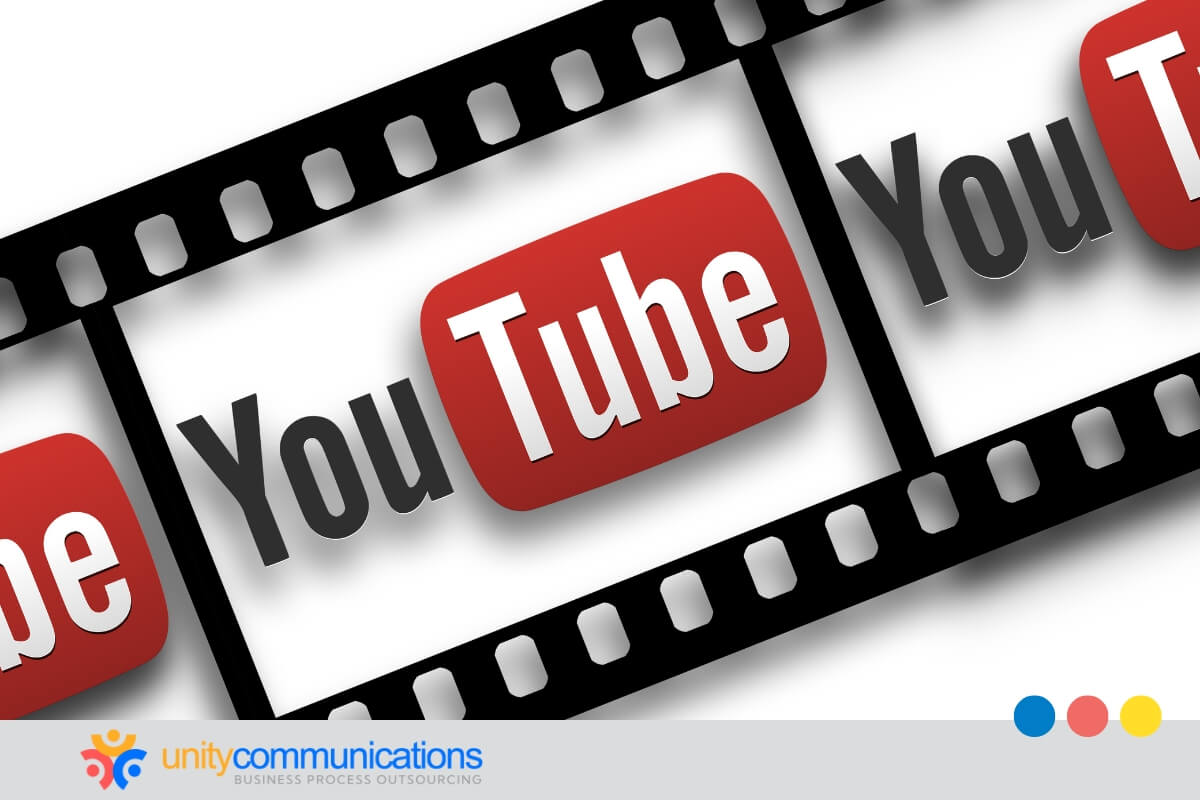Table of Contents
Social media marketing is essential for increasing brand awareness, retaining customers, and converting leads. However, understanding your customers’ unique strengths can be the key to achieving your goals without wasting resources.
In 2025, staying ahead means keeping up with fast-evolving trends and choosing social media marketing platforms that match your brand, audience, and strategy.
This comprehensive guide breaks down five essential social media platforms, revealing their key features, target audiences, and marketing advantages to help you decide where to focus your efforts. It also explores how outsourcing social media marketing services can boost engagement and conversion without overwhelming your internal team.
Why platform selection matters: Key considerations

Social media sites allow you to connect with your audience, build brand awareness, and drive engagement. However, not all platforms are created equal.
By understanding the unique elements of each platform, you can effectively utilize social media to grow your brand and connect with your audience in 2025 and beyond. Below are the features, benefits, and challenges of the most influential social media marketing platforms:
1. Facebook: The all-purpose marketing powerhouse
Facebook remains one of the most powerful social media marketing platforms, giving you access to a diverse audience. With over three billion monthly active users, it provides a versatile space to engage with customers, promote products, and build strong online communities.
From organic content marketing to highly targeted paid advertising, Facebook is a go-to platform for businesses of all sizes. Key Facebook advantages:
- Massive audience reach. Facebook’s vast user base lets you connect with customers from different demographics, industries, and locations.
- Advanced advertising precision. Facebook Ads offer precise targeting options, including interests, behaviors, and location. This helps you reach your ideal audience efficiently.
- Diverse content formats. You can use posts, videos, stories, reels, and Facebook Live to engage users creatively.
- Community-building tools. Facebook Groups and Pages help you foster engagement and build loyal customer communities.
- Comprehensive analytics. Facebook Insights provides valuable engagement, reach, and performance data to refine social ad campaigns.
Although these benefits make Facebook a powerful marketing tool, you must also navigate some challenges to optimize your efforts. Here are some growing Facebook issues and strategies to overcome them:
- Declining organic reach. Facebook’s algorithm prioritizes personal interactions over brand content, making it harder to reach audiences organically. Address this by focusing on high-quality, engaging content, using Facebook Groups, and supplementing with paid advertising.
- Rising ad costs and competition. With more businesses advertising on Facebook, ad costs can increase, which can be limiting for small businesses. Use A/B testing, refine audience targeting, and invest in retargeting campaigns to maximize ad efficiency.
- Frequent algorithm changes. Facebook constantly updates its algorithm, which affects content visibility and strategy. Consider diversifying content formats and engaging with users through comments, groups, and messages.
- Managing engagement and customer inquiries. Responding to real-time customer comments, messages, and reviews can be time-consuming. You can use a chatbot to automate responses or outsource to a business process outsourcing (BPO) company for 24/7 customized support.
Facebook remains a top choice for brands looking to reach broad audiences and build lasting customer relationships. While its powerful tools offer immense marketing potential, success depends on adapting to algorithm shifts, rising competition, and evolving user behaviors. With the right strategy and possible support from automation or outsourcing, Facebook can still deliver exceptional ROI in 2025.
2. Instagram: Visual storytelling for younger audiences
Instagram is one of the most visually driven social media marketing platforms, ideal for showcasing products, services, and lifestyle-oriented content. With over two billion monthly active users, 67% of users aged 18-34, it is a favorite among creatives, influencers, and businesses looking to build a strong brand through visual storytelling. Some of its stand-out features include:
- Content diversity. Instagram thrives on dynamic content such as images, videos, and interactive Stories, unlike text-heavy posts on Facebook and LinkedIn.
- Engagement through short-form content. Instagram’s reels (short-form videos) and stories (disappearing content) encourage high engagement and real-time interactions.
- Influencer marketing hub. Instagram is a go-to for creator collaborations that deliver authentic reach and community trust.
- Mobile-centric experience. Designed primarily for smartphones, it supports quick browsing and on-the-go engagement.
- E-commerce integration. With Instagram Shopping, product tags, and in-app checkout, converting followers into customers is easier than ever.
If your business targets younger audiences or demands visual storytelling, Instagram is valuable for the following reasons:
- High engagement. Instagram users are more likely to like, comment, and share posts than on other platforms, boosting brand visibility.
- Strong brand aesthetic and storytelling. You can create an appealing brand identity through consistent branding and curated visuals.
- Influencer partnerships. Working with influencers helps you tap into existing communities and foster trust with potential customers.
- Shopping and direct sales. You can turn your profiles into virtual storefronts using the in-app shopping features.
- Advanced targeting and ads. You can match ads with your core audiences for higher conversions.
Despite its many advantages, Instagram marketing introduces some hurdles you must tackle.
- Algorithm changes affect reach. Since Instagram constantly updates its algorithm, maintaining organic visibility might be more difficult. Focus on consistent posting, engaging content, and leveraging reels and stories, which Instagram prioritizes in feeds.
- High competition and saturation. With millions of brands on Instagram, standing out requires developing a unique brand voice, using high-quality visuals, and engaging followers through comments, polls, and interactive content.
- Time-consuming content creation. Maintaining a visually appealing feed requires significant time and effort. You can plan content with scheduling tools or partner with a BPO company for social media management.
- Limited link sharing. Instagram restricts clickable links, which might affect website traffic. Consider using the Link in Bio feature, Instagram stories (with links for verified accounts), and Instagram Shopping for seamless conversions.
Instagram is ideal for brands that rely on visuals, storytelling, and younger demographics. Its high engagement, influencer culture, and e-commerce tools offer powerful ways to connect and convert. To succeed, businesses must stay creative, post consistently, and consider outsourcing to manage content creation and strategy demands.
3. TikTok: Viral content and Gen Z engagement
With roughly 2.2 billion monthly visits, TikTok has rapidly grown into an influential social media marketing platform. Its appeal stems from its unique way of connecting brands with audiences through creative, fast-paced, shareable content.
Unlike traditional social channels, TikTok thrives on authenticity, trends, and user-generated content, making it an exciting space to expand your reach. TikTok also stands out due to these factors:
- Short-form, video-first content. TikTok is mostly video-driven, with clips ranging from a few seconds to ten minutes.
- Virality and trend culture. Its algorithm pushes content beyond your follower base. Posts can go viral faster than on other platforms.
- High user engagement. Its For You Page (FYP) algorithm serves fresh content tailored to user preferences, encouraging longer app usage. Challenges, duets, and other user interactions boost engagement.
- Music and audio integration. TikTok’s vast music and sound library allows brands to create dynamic content using trending audio clips, a feature not as deeply integrated into other social media channels.
Most TikTok users are between 16 and 34 years old, which makes it excellent for businesses targeting younger audiences. It also has a thriving creator economy where influencers can build strong communities to secure brand partnerships.
Due to the site’s interactive and entertainment features, fashion, beauty, fitness, gaming, and food can increase its following and conversions. Many small brands also leverage TikTok’s organic reach to gain exposure without heavy advertising costs. The channel’s unique format and algorithm offer several advantages, including:
- Viral potential and rapid growth. Unlike other social media platforms where follower count matters significantly, TikTok’s algorithm gives every video the potential to reach a massive audience, even for new accounts.
- Authentic and relatable branding. TikTok prioritizes unpolished, real content over highly curated ads, letting you connect with users more naturally and engagingly.
- Cost-effective advertising and organic reach. Although paid ads are available, many brands see significant success through organic content, reducing marketing costs.
- Influencer marketing and collaboration. You can partner with TikTok creators to quickly tap into existing communities and build audience trust.
Despite TikTok’s benefits, marketing on the app can introduce challenges. Here’s how to address them:
- Keep up with trends. TikTok trends change rapidly, and outdated content can struggle to gain traction. Stay active on the platform, monitor trending hashtags and sounds, and be ready to adapt content strategies quickly.
- Short video format constraints. Delivering a compelling message might be challenging due to the limited time to capture attention. Focus on hooking viewers within the first three seconds, using bold visuals, captions, and engaging storytelling.
- Time-intensive content creation. Successful TikTok marketing requires regular posting and creative video production. You can batch-create content and use scheduling tools. Another solution is outsourcing your social media marketing for content management.
TikTok offers unmatched opportunities for virality, authentic branding, and deep Gen Z engagement. Its trend-driven ecosystem favors creativity over polish, making it ideal for brands willing to experiment. To stay relevant, marketers must act fast, think visually, and consider outsourcing content production to maintain consistency and quality.
4. X (Twitter): Real-time conversations and thought leadership
This social media marketing platform lets you engage with audiences instantly, build brand authority, and participate in trending discussions. Unlike visual-heavy platforms such as Instagram or TikTok, X thrives on short-form content, conversations, and thought leadership. X’s core features include:
- Text-centric format. Most users publish micro feeds (formerly tweets) focusing on ideas, opinions, and discussions.
- Trending topics. The Trending section highlights viral moments, industry news, and cultural trends more quickly than other social apps.
- Hashtag and community engagement. X’s hashtag system is one of the most effective ways to increase discoverability and join relevant conversations in real time.
- Customer service and direct communication. X is excellent for customer support because you can respond directly to customers’ questions and complaints.
Because of the topics it covers and features it offers, this social media site is an essential marketing tool for the following groups:
- Professionals and thought leaders. Many business leaders, entrepreneurs, and industry experts use X to share insights and engage in discussions.
- News and media customers. Many of its users also turn to the platform for real-time news, updates, and breaking events.
- Tech and finance enthusiasts. Startups, investors, and tech professionals actively engage in discussions about innovations, markets, and trends.
- Political and social activists. The platform is a hub for activism, debates, and social movements.
X can be very beneficial if you want to engage in honest, real-time conversations. Its key benefits include:
- Strong brand voice and thought leadership. Sharing opinions, updates, and industry insights can improve your brand’s authority.
- Cost-effective marketing and virality. A well-crafted post can go viral without spending a significant advertising budget.
- Customer service and reputation management. You can quickly respond to customer inquiries, complaints, and feedback, improving brand trust.
- Influencer and community engagement. With X, you can collaborate with industry influencers, journalists, and experts to expand your reach.
Although X is a powerful social media marketing platform, you might face two significant challenges: cancel culture and the short shelf life of posts. Open dialogue is a double-edged sword. One misstep can lead to reputational backlash. Have a crisis management plan in place.
Meanwhile, newer tweets can quickly bury yours in minutes due to the site’s high engagement. Stay visible by posting frequently, using trending hashtags, and joining live discussions.
5. YouTube: Long-form video and SEO power
YouTube, the world’s second-largest search engine after Google, dominates long-form video content marketing. However, it differs from other visual social channels because of these factors:
- Evergreen content and discoverability. Unlike TikTok or Instagram reels, where content has a short lifespan, YouTube videos remain relevant for months or even years, thanks to the site’s strong search engine optimization (SEO) integration with Google.
- Long-form video content. If X and Instagram prioritize quick, bite-sized content, YouTube allows in-depth storytelling, tutorials, and educational content.
- Diverse content formats. YouTube supports various content types, from how-to guides and product reviews to live streams and vlogs.
- Stronger community building. Unlike fast-scrolling platforms, this video search engine fosters deeper audience engagement through comments, subscriptions, and longer watch times.
With these features, consider this social media marketing platform if you want to attract:
- General consumers. Many users turn to YouTube for product reviews, unboxing videos, and tutorials before buying.
- Educational enthusiasts. People seeking how-to guides, online courses, and skill-building content frequently use the site.
- Entertainment seekers. Comedy, gaming, and lifestyle viewers comprise a significant portion of YouTube’s audience.
This social media marketing platform’s video-first approach offers businesses several advantages:
- Brand awareness and authority. High-quality videos help establish credibility and thought leadership in any industry.
- Organic discoverability. YouTube videos appear in Google search results, increasing your brand’s visibility and traffic.
- Long-term content value. Unlike Instagram Stories or TikTok videos that disappear quickly, YouTube content remains discoverable for years.
Despite the advantages, YouTube marketing can introduce roadblocks, even for small businesses:
- High production costs and time investments. Creating professional, high-quality videos requires time, effort, and resources. Streamline content creation and reduce overhead costs by delegating the work to BPO agencies.
- Competition and saturation. With millions of videos uploaded daily, standing out can be difficult. To differentiate from competitors, focus on a niche audience and high-value content.
- Sustaining viewer engagement. Longer videos can lose viewer attention if they aren’t engaging enough. Use storytelling techniques, strong visuals, and audience-driven topics to maintain interest. Understanding how outsourcing works can also scale your YouTube marketing efforts efficiently.
YouTube is the go-to platform for brands investing in long-form video, SEO, and lasting content value. Its ability to drive discovery and build trust makes it ideal for education, reviews, and in-depth storytelling. While production demands can be high, outsourcing content creation helps you stay consistent, competitive, and engaging.
The bottom line

Success in social media marketing platforms requires more than just creating content. It demands adaptability, strategic engagement, and a clear understanding of platform-specific dynamics. You must balance creativity with data-driven insights to ensure your efforts lead to meaningful connections and tangible results.
That’s why businesses partner with BPO providers to stay consistent, competitive, and scalable. Need support managing your social media strategy? Let’s connect and explore how third-party experts can help you grow.




